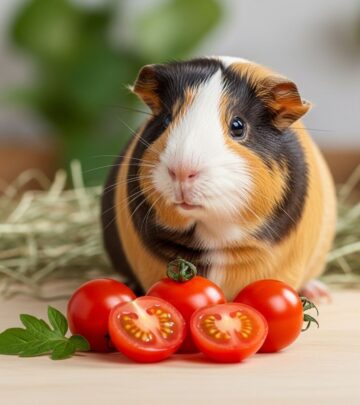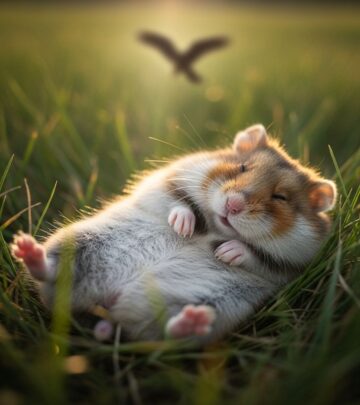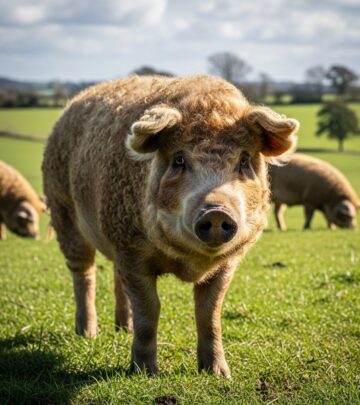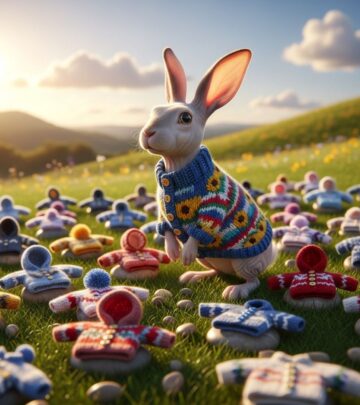How One Woman Saved a Squirrel From Overgrown Teeth
A rancher’s ingenuity and compassion show how a little research can save a life.
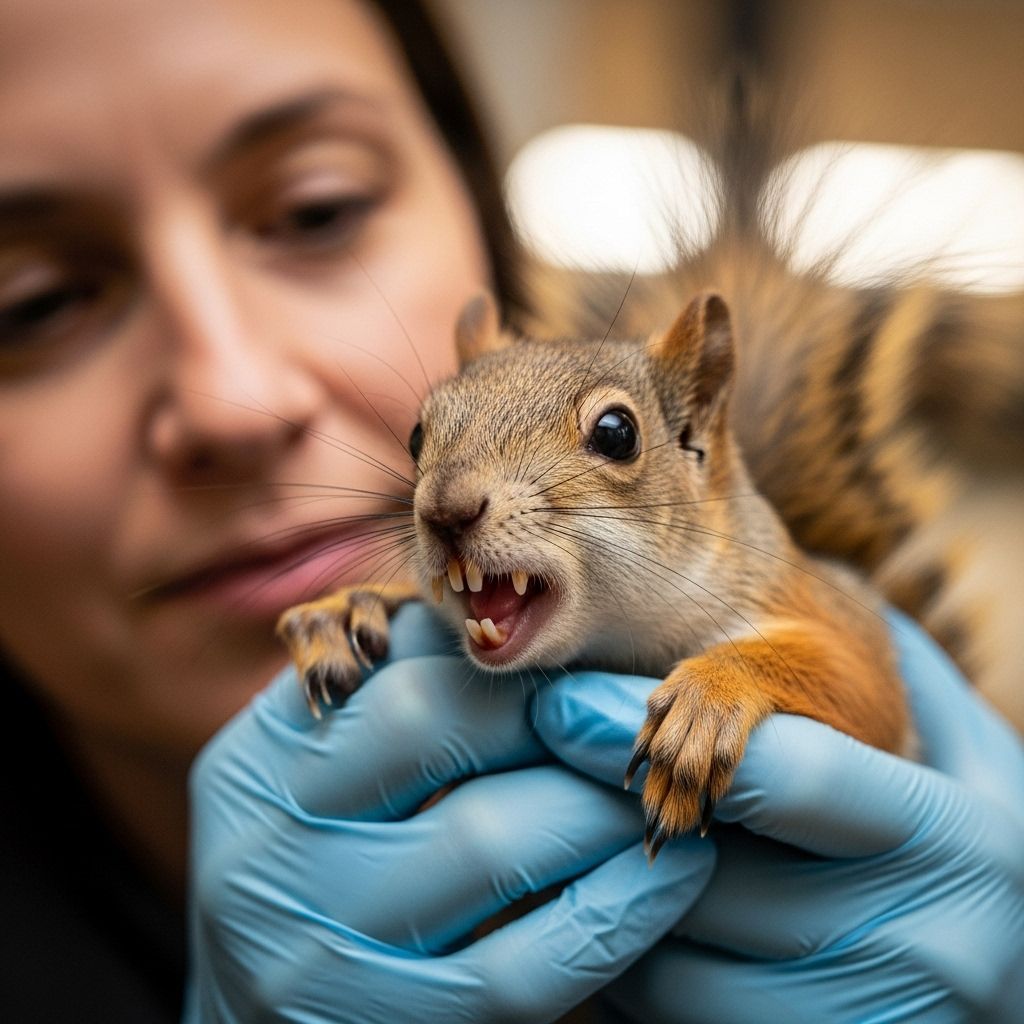
Image: HearthJunction Design Team
In a gentle corner of Alberta, Canada, a rancher named Jannet Talbott became an unlikely wildlife hero when she encountered a wild squirrel suffering from a surprisingly severe dental problem: overgrown teeth. The heartwarming rescue not only gave the squirrel—whom Jannet affectionately named Bucky—a second chance at a normal life, but also drew attention to the challenges wildlife can face and the simple actions everyday individuals can take to help.
Category: Wildlife Rescue
Stories like this serve as poignant reminders of how small acts of kindness and ingenuity can change an animal’s life. Below, explore the remarkable story step by step: the problem, the solution, and the lessons for all who care about animals in need.
Discovery: The Squirrel With a Dental Dilemma
It began as a familiar sight: squirrels darting across the trees and foraging on the ground near Jannet Talbott’s rural home northwest of Edmonton, Alberta. But one squirrel stood out. He was acting strangely: listless, unable to eat, and showing clear signs of distress. On closer inspection, Jannet noticed something shocking: the squirrel’s front teeth, called incisors, were curled and grotesquely overgrown, protruding in an unnatural and painful arc (see ).
- Unusual Behavior: The squirrel stopped nibbling on nuts and seeds, frequently pawed at his mouth, and appeared underweight.
- Physical Symptoms: Overgrown teeth made it virtually impossible for him to eat, drink, or groom himself.
- Emotional Impact: Witnessing his suffering galvanized Jannet into action.
The squirrel’s predicament was not just rare—it was potentially fatal. Unlike most rodent teeth, squirrel incisors grow continuously throughout life, usually maintained to the right length by gnawing on hard materials. Sometimes, due to genetics, injury, or inadequate food sources, this balance is disrupted. Teeth may grow in the wrong direction or become so long that they curve back into the mouth, causing pain, inability to eat, and, if left untreated, death by starvation.
Recognition: Understanding The Problem of Overgrown Rodent Teeth
To appreciate Jannet’s intervention, it helps to understand the details of rodent dental anatomy:
- Continuous Growth: Squirrels’ upper and lower incisors never stop growing. Gnawing naturally keeps them in check.
- Malocclusion: When teeth do not align correctly (due to trauma, disease, or birth defects), they cannot wear down. The result: dangerous overgrowth and deformation.
- Severity: In severe cases, teeth can pierce the mouth or skull, impede feeding, or lead to dental abscesses.
Squirrel owners and wildlife rescuers know that overgrown teeth require prompt intervention. In the wild, however, such afflictions often go unchecked until life-threatening complications arise.
Decision: An Act of Compassion
Jannet Talbott, a veteran rancher with years spent tending to a variety of animals, had never been a wildlife dentist. Yet, when she saw the little squirrel’s plight, she knew she had to help.
- Empathy: Jannet felt a deep connection to creatures both wild and domestic, and felt compelled to intervene rather than let nature take its course .
- Resourcefulness: With limited options, she resolved to perform a do-it-yourself dental rescue.
- Safety First: Knowing the risks both to herself and the squirrel, Jannet approached the task with caution and patience.
Preparation: DIY Wildlife Dentistry Begins
The solution was not as simple as whisking the animal off to a veterinarian. Access to wildlife vets is extremely limited in rural areas, and the squirrel was wild and not a pet. Instead, Jannet did what many resourceful modern-day problem solvers do—she turned to the Internet .
- Research: Jannet scoured the web for guidance. Helpful tutorials and videos explained the basics of trimming rodent teeth safely.
- Gathering Tools: She assembled basic but effective tools: a small blanket for restraint, a soft towel to swaddle the squirrel, and a pair of wire cutters, meticulously cleaned for the job.
- Setting The Scene: To minimize stress for both herself and the animal, she chose a quiet room, limited distractions, and wore gloves.
Process Step-By-Step
- Catching Bucky: The squirrel, later affectionately dubbed ‘Bucky’, was already weakened and more docile than usual, making capture easier.
- Gentle Restraint: Jannet wrapped him snugly in a towel, covering his eyes to calm him.
- Precision Trimming: She carefully trimmed back the unruly incisors with the wire cutters, following the guidance she had researched online .
A crucial point: Squirrels’ teeth lack nerves at the cutting edge. With proper technique, there is little chance of causing pain if only the overgrown portion is removed. Bucky remained cooperative, showing little resistance—and immediate relief.
Relief: The Squirrel’s Remarkable Recovery
The transformation was almost immediate. Once freed from the restrictions of his deformed teeth, Bucky wasted no time:
- Eating Again: He eagerly sampled seeds and nuts, now able to use his tongue and mouth normally .
- Grooming: He resumed grooming, regaining his fuzzy, neat appearance.
- Behavior: He grew more active, vocalizing (chattering) and moving with newfound energy.
As Jannet recalled, “I put him back in the tree and he was so happy. He rubbed his little cheeks all on the bark like he couldn’t believe that tusk was gone. And when I saw him the next morning, he was chattering away at me and looked just fine.”
Aftercare and Continued Stewardship
Unlike a one-time rescue, dental problems in rodents can reoccur if the root cause persists. Jannet understood the job was not finished:
- Monitoring: She kept an eye out for Bucky’s return, watching for any signs of dental trouble.
- Preparedness: “If he does, I won’t hesitate to give him another trim with the wire cutters,” Jannet quipped .
- Inspiration: She hoped her story would inspire others to take similar small actions for animals in need.
While not every case allows for a hands-on intervention, her experience emphasized that animal lovers, with adequate care and research, can sometimes bridge the gap when professional help is unavailable.
Why Overgrown Teeth Happen: Squirrel Dental Facts
- Incisors function as chisels: Squirrels use their ever-growing teeth for gnawing, cracking, and digging.
- Dental wear depends on activity and diet: Softer diets or lack of hard materials can hasten overgrowth.
- Trauma or genetic conditions: Sometimes, jaw injuries or misaligned teeth set the stage for malocclusion.
If left unchecked, overgrown incisors in wild rodents almost inevitably lead to declining health—and ultimately death from inability to feed or infection.
DIY Wildlife Dentistry: Is It Safe?
It would be irresponsible to suggest everyone with a wild animal try this at home. Nevertheless, Jannet’s rescue highlights when this kind of intervention may be warranted, with key safety guidelines:
| Consideration | Recommendation |
|---|---|
| Experience | Hands-on animal experience is vital. Novices should seek expert help when possible. |
| Safety Equipment | Wear gloves; never try to restrain a wild animal with bare hands. |
| Gravity of Problem | Cases involving severe overgrowth, obvious suffering, or inability to eat are emergencies. |
| Research | Watch multiple instructional videos, read up on rodent anatomy and tools. |
| Legal Status | Check regulations about handling and treating wild animals in your area. |
Wider Lessons: Empathy, Resourcefulness, and Community
Jannet Talbott’s rescue of Bucky stands as a testament to the transformative impact of empathy combined with practical know-how:
- Empowering individuals: Regular people can sometimes step in to save wildlife with creativity and care.
- Importance of Observation: Noticing subtle changes in animal behavior can be lifesaving.
- Shared Knowledge: The Internet enables access to crucial, sometimes specialized, animal care knowledge.
- Ripple Effect: One person’s action can encourage others to get involved, fostering a community of compassion for animals.
Frequently Asked Questions (FAQ)
Q: Why do squirrel teeth grow so long?
A: Squirrels, like all rodents, have incisors that grow continuously throughout their lives. If not worn down by regular gnawing on hard objects, their teeth will continue to elongate, sometimes curling in painful and abnormal directions.
Q: Is it safe to trim a wild animal’s teeth?
A: Trimming a wild animal’s teeth is generally best left to professionals. If you are experienced with animal handling, have researched the proper techniques, and the animal faces a life-threatening blockage, a careful intervention may be justified. Always use sanitized tools and employ gentle restraint techniques. If in doubt, contact a wildlife rehabilitator or veterinarian.
Q: How can people prevent overgrown teeth in animals?
A: For wild animals, prevention isn’t generally possible. In captive rodents and pets, providing a varied diet with plenty of things to chew—like untreated wood blocks—can help prevent overgrowth. For wild creatures like Bucky, natural wear is the best prevention.
Q: What should someone do if they see a wild animal struggling?
A: Observe the animal carefully and contact a certified wildlife rehabilitator or animal welfare organization in your region. Many animal issues require specialized care and legal considerations.
Q: Did Bucky fully recover after the procedure?
A: Yes. Following the successful trimming of his teeth, Bucky was able to resume eating, grooming, and behaving normally. His follow-up visits showed no sign of further dental or health problems, though ongoing monitoring was provided just in case.
Inspiration: How One Story Can Make a Difference
Ultimately, the story of the wild Alberta squirrel and the woman who cared enough to help has ripple effects far beyond her yard. Jannet’s philosophy captures the spirit: “If we all did a little, it would end up being a lot.”
- Call to Action: Get involved, pay attention, and don’t underestimate the difference you can make—even if you’re not an expert!
Who knows? The next animal in distress could be waiting for someone just like you to change its life.
References
- https://www.cbc.ca/news/canada/edmonton/squirrel-edmonton-alberta-teeth-fangs-barrhead-1.4704737
- https://calgaryherald.com/news/local-news/giant-chompers-womans-squirrel-dentistry-saves-rodent-with-overgrown-teeth
- https://earthlymission.com/woman-finds-squirrel-with-extremely-overgrown-teeth-trim-dentistry/
- https://animalchannel.co/woman-saves-squirrel-overgrowth-teeth/
- https://www.ctvnews.ca/canada/article/giant-chompers-womans-squirrel-dentistry-saves-rodent-with-overgrown-teeth/
Read full bio of Srija Burman








